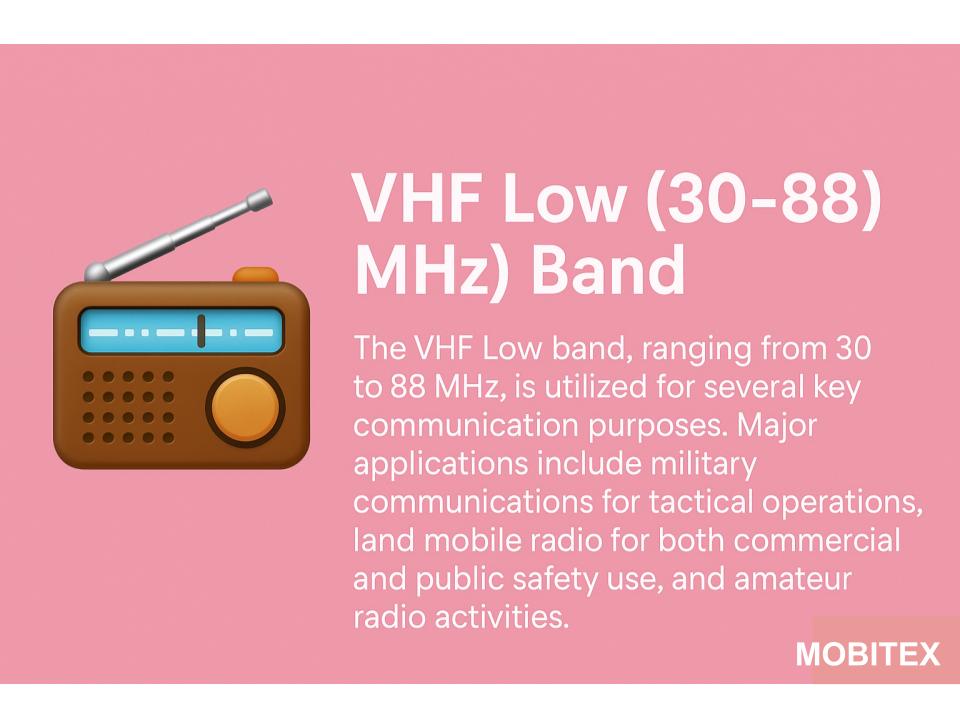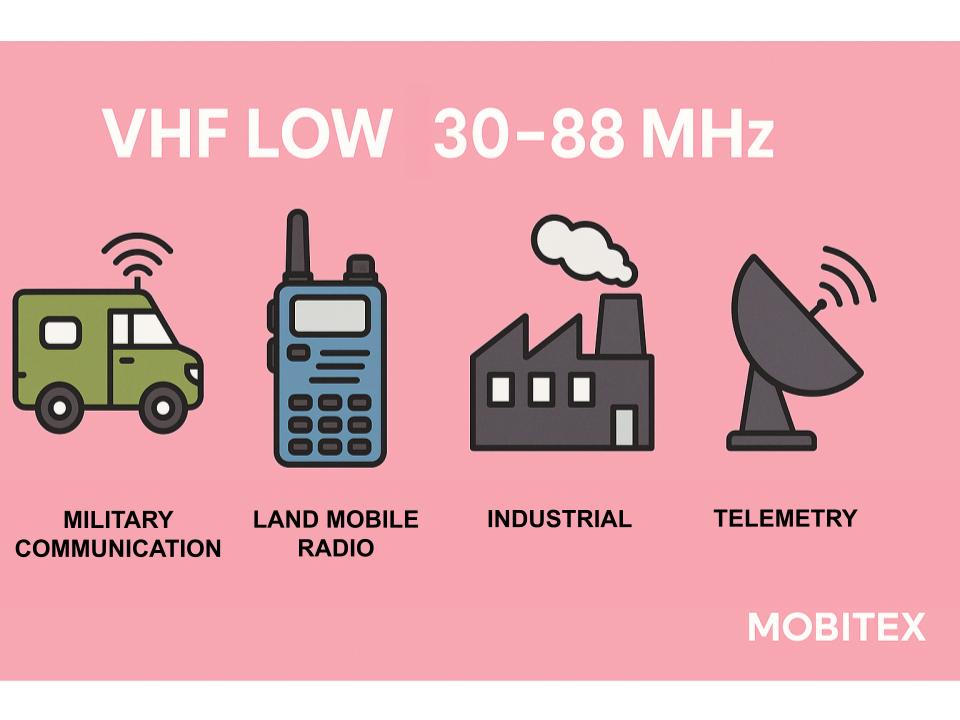📡 The VHF Low Band (Very High Frequency Low) covers the frequency range between 30 MHz and 88 MHz, sitting just above the HF band and below the main commercial FM broadcast band. This section of spectrum plays a vital role in military, public safety, land mobile, and broadcasting communications due to its excellent propagation and ability to penetrate terrain.
🌍 Frequency Range Overview
- VHF Low Band Range: 30 MHz – 88 MHz
- Wavelengths: 10 m – 3.4 m
- Band Category: Very High Frequency (VHF)
- Propagation: Groundwave and sporadic E ionospheric reflection under certain conditions
The VHF Low Band is often referred to as the 30–50 MHz or 30–88 MHz range depending on the application. For example, civilian land mobile radio typically uses 30–50 MHz, while military and tactical systems extend up to 88 MHz.
⚙️ Key Uses of the VHF Low Band
🎖️ Military Communications (30–88 MHz)
The primary military allocation in this range is 30–88 MHz.
This segment supports:
- Tactical field radios for ground forces
- Manpack and vehicle-mounted transceivers (e.g., SINCGARS systems)
- Line-of-sight (LOS) communication between units in rugged terrain
- Frequency hopping and encryption for secure operations
VHF Low is preferred by the military because of its balance between range and mobility — offering several kilometers of communication coverage even with compact antennas.
🚓 Land Mobile and Public Safety (30–50 MHz)
In civilian use, 30–50 MHz has long been employed by:
- Police, fire, and emergency services
- Utility and transportation networks
- Rural and highway communications
Although many systems have migrated to UHF and digital networks, the VHF Low Band remains useful in rural areas because signals travel farther and cover large open spaces efficiently.
📺 Broadcasting (54–88 MHz)
The upper portion of the band (54–88 MHz) historically hosted VHF television channels 2–6 in North America.
- Channel 2: 54–60 MHz
- Channel 3: 60–66 MHz
- Channel 4: 66–72 MHz
- Channel 5: 76–82 MHz
- Channel 6: 82–88 MHz
Even today, these frequencies are used for low-power TV, educational transmitters, and occasionally experimental broadcasting. In some regions, Channel 6’s audio carrier (87.75 MHz) is used for FM radio simulcasts.
🚜 Industrial and Agricultural Radio
The 30–50 MHz range is widely used by:
- Farming and irrigation control systems
- Forestry and logging communications
- Transportation fleets and heavy machinery coordination
The wide-area coverage and resistance to foliage attenuation make it ideal for outdoor, spread-out operations.
📡 Amateur (Ham) Radio
Amateur operators have allocations around:
- 50 MHz – 54 MHz (the 6 meter band)
This band is a favorite among hams for sporadic E propagation, allowing signals to reach hundreds or thousands of kilometers during certain ionospheric conditions.
- Modes: SSB, CW, FM, and digital (FT8, JS8Call)
- Great for both local VHF work and DX experiments

🌐 Propagation Characteristics
| Mode | Description | Typical Range |
|---|---|---|
| Groundwave | Follows Earth’s surface | 30–50 km (can exceed 100 km in open terrain) |
| Tropospheric Ducting | Signal trapped in temperature inversion layers | Up to 300 km |
| Sporadic E (E-skip) | Signal reflects off dense ionized patches | 500–2500 km |
| Ionospheric (F-layer) | Rare above 30 MHz, but possible at solar peaks | Intercontinental (occasional) |
🔋 Advantages of VHF Low Band
✅ Excellent range with relatively low transmitter power
✅ Good penetration through vegetation and terrain
✅ Simple, low-cost antenna designs
✅ Reliable for tactical and rural coverage
⚠️ Challenges
⚡ Susceptible to electrical noise from engines and power lines
📶 Antenna size increases with longer wavelength
🛰️ Limited channel capacity compared to UHF or microwave systems
🧭 Summary
The VHF Low Band (30–88 MHz) is a foundational part of the radio spectrum — bridging the gap between local VHF/UHF systems and long-range HF communications.
Its combination of long reach, terrain resilience, and simplicity keeps it in active use by:
- Military forces worldwide
- Rural public safety networks
- Industrial and agricultural users
- Amateur radio operators
Despite newer digital and satellite systems, the VHF Low Band remains relevant, robust, and indispensable for reliable, wide-area radio communications.

